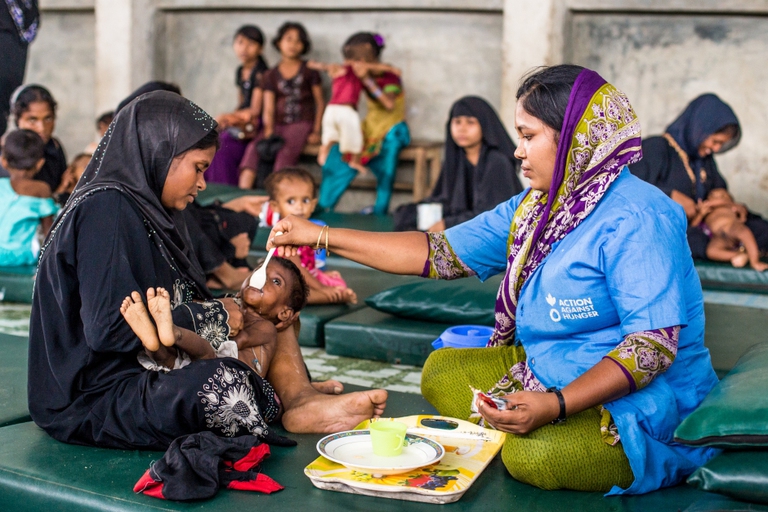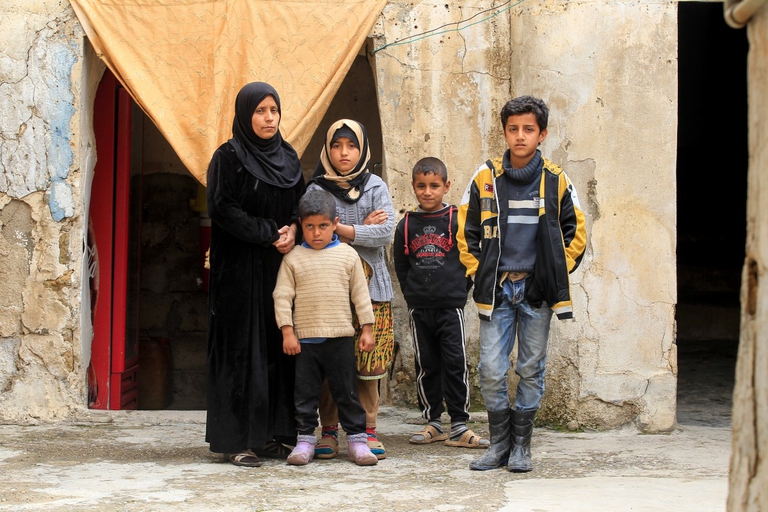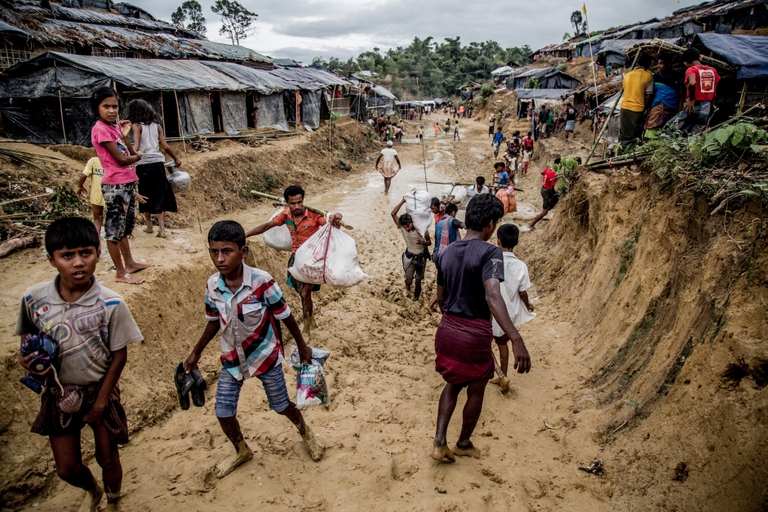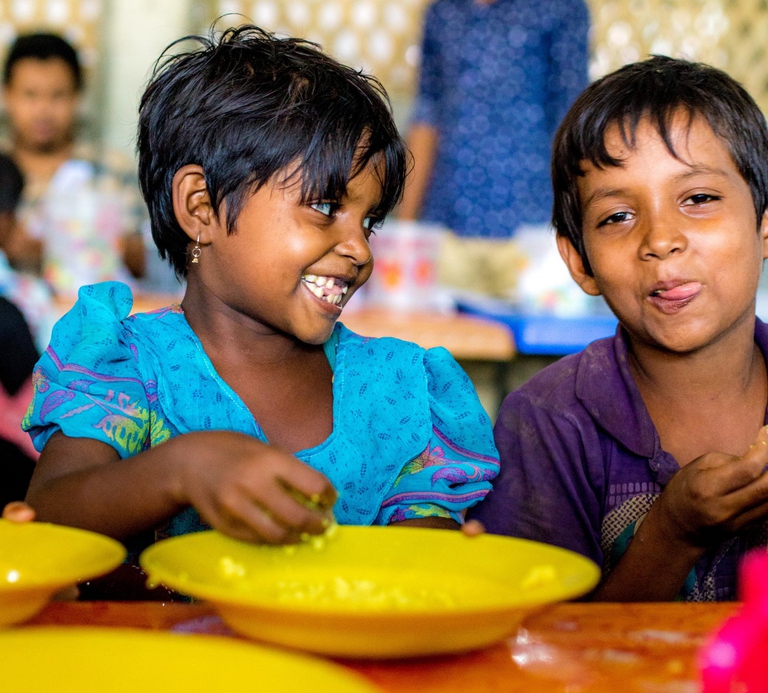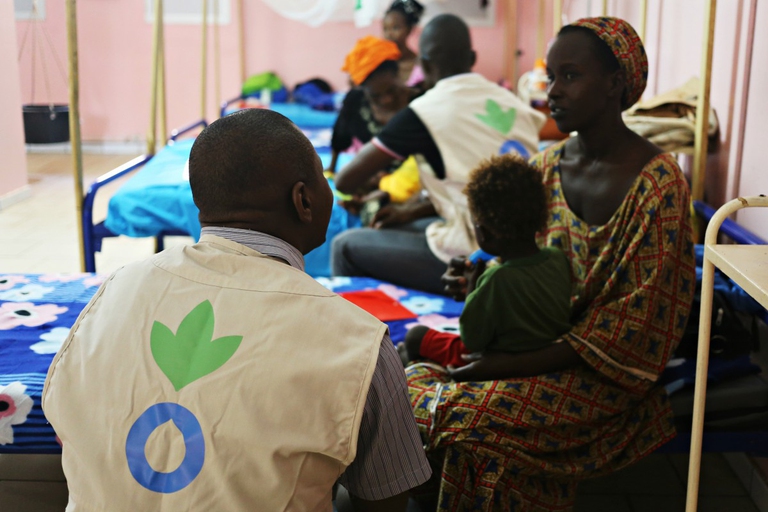
The Louise Michel is the humanitarian rescue ship saving lives in the Mediterranean. Financed by the artist Banksy, it has found a safe port in Sicily.
The countries hosting the most refugees aren’t the wealthy, Western ones. An overview by NGO Action Against Hunger reminds us that refugees and internally displaced people are far from being safe.
World Refugee Day, celebrated on 20 June, is the right occasion to remember that migratory phenomena caused by wars and conflicts are on the rise. Last year alone the number of refugees and internally displaced people around the world hit 66 million. One of the main consequences has been the increase in the number of people facing hunger, a figure that has grown for the first time in over a decade.
Indeed, hunger is often linked to massive displacement caused by violence. As well as their homes, these people leave all sources of income behind, becoming totally reliant on hosting communities’ solidarity and humanitarian aid, if they manage to reach a refugee camp and gain refugee status.
On average, a displaced person spends 17 years away from home. A shocking figure. However, their prolonged stay not only pushes refugee adaptation mechanisms to their limits (with cases of early marriages and child labour increasing almost everywhere, among other things), but also threatens basic services and resources of host countries, which aren’t the world’s wealthiest, but are instead developing countries, often susceptible to new conflicts.
Moreover, in recent years there has some donor fatigue with regards to “frozen conflicts” and a tendency to reduce humanitarian aid when the presence of refugees lasts more than one or two years. This is why Action Against Hunger seeks solutions to generate livelihoods among refugees, through small forms of commercial exchange or professional activities within camps, in order to generate some kind of independence from humanitarian aid. One of the most successful projects in this area, linked to the recycling of waste, was launched by the NGO with Syrian refugees in Irbid, Jordan, with financial support from GIZ, the German development agency.
The arrival of refugees, particularly from Syria to Jordan is putting pressure on the country’s economy and infrastructure. The number is now estimated at over 1.3 million people, with 79 per cent of them living in urban or rural communities, and the remaining 21 per cent in camps. The challenge is, therefore, to provide this broad population with basic livelihoods and at the same time support host communities in their immediate needs.
Read also: Azraq is the world’s first refugee camp powered by solar energy
Action Against Hunger’s Waste Upcycle programme, dedicated to Syrian and Jordanian women living in poverty, increases opportunities for livelihood activities, social integration and benefits for local areas, which are scattered with plastics, paper and other household waste. For many Syrian refugees, this is the first time they have the opportunity of earning some money and integrating in the local community of Irbid.
[vimeo url=”https://vimeo.com/275798109″]
In addition to Syrian refugees in Jordan and Lebanon, Action Against Hunger works in the context of other major crises: Mali, Niger, Mauritania, South Sudan and with Rohingya refugees in Bangladesh.
With 620,000 arrivals in just three months, the Rohingya’s is the fastest-rising refugee crisis. This huge influx has had an overwhelming effect on Bangladesh, a country where 31.5 per cent of the population lives in poverty.
About one million people have taken refuge in the camps and villages of Cox’s Bazar. Over 40 per cent of children are facing stunted growth and rates of severe malnutrition are far above the the World Health Organisation (WHO)’s emergency thresholds.
In 2017, Action Against Hunger responded to three main (and interconnected) emergencies: the Rohingya refugee crisis, typhoon Mora and heavy flooding in north-western regions. Together with various local and international organisations, its has undertaken the prevention and treatment of acute malnutrition, and supported vulnerable people in formal and informal camps through direct interventions in the fields of nutrition, physical and mental health, water and hygiene.
At the same time, the NGO’s teams have carried out activities of disaster risk reduction, strengthening the resilience of communities and authorities to cope with natural disasters. Bangladesh, in fact, is particularly vulnerable to climate disasters. But it isn’t the only one.
The Sahel‘s unstoppable desertification is making an entire region of the African continent uninhabitable. If it is indeed true that the hunger season is a cyclical phenomenon typical of the sub-Saharan belt, due to global climate change the period of the “lean season” is extending more and more, while seasonal rains become more and more unpredictable.
This year, Senegal and Mauritania fear the worst food crisis since 2012, when the countries faced the last major drought. But this isn’t enough to stop the influx of refugees from Mali. “In Mberra’s camp there are about 56,000 refugees who have escaped from violence in Mali, half of whom aren’t even 18,” says Nouakchott Elena Vicario, Director of Action Against Hunger Mauritania. “We’re in a critical situation: only 6 per cent of the humanitarian appeal for refugees in Mauritania has been covered, but they’re completely dependent on food assistance.”
According to data from Italy’s Ministry of the Interior, in the last six months 14,400 people arrived on Italian shores – just one quarter of the refugees in this arid, resource-poor country, and just one-twentieth of the 280,000 refugees and asylum seekers from East Africa stranded in Yemen.
To flee violence, these people have found themselves in a war. To escape from hunger and drought, they’ve (unconsciously) ended up in the midst of the biggest humanitarian crisis of our time. But the international community (which is aware of their condition) has decided to forget them. World Refugee Day is here to force us, if not to act, at least to admit what’s going on.
Siamo anche su WhatsApp. Segui il canale ufficiale LifeGate per restare aggiornata, aggiornato sulle ultime notizie e sulle nostre attività.
![]()
Quest'opera è distribuita con Licenza Creative Commons Attribuzione - Non commerciale - Non opere derivate 4.0 Internazionale.
The Louise Michel is the humanitarian rescue ship saving lives in the Mediterranean. Financed by the artist Banksy, it has found a safe port in Sicily.
Venezuelan refugees are vulnerable to the worsening outbreak in South America: while coronavirus doesn’t discriminate, it does affect some people more than others.
In the midst of India’s coronavirus lockdown, two dozen people lost their lives in a desperate bid to return home: migrant labourers forced to leave the cities where they worked once starvation began knocking at their doors.
Behrouz Boochani returned to being a free man during the course of this interview. The Kurdish writer was imprisoned by the Australian government in Papua New Guinea for six years.
The Global Compact for Safe, Orderly and Regular Migration was signed by 164 nations in Marrakech. This is what the non-binding agreement that encourages international cooperation stipulates.
The winners of the World Press Photo 2019 tell the stories of migrants in the Americas. From the iconic image of a girl crying on the border between Mexico and the United States to the thousands of people walking from Honduras towards a better life.
The Semìno project is a journey of discovery through different countries’ food habits, offering migrants employment opportunities and allowing us to enjoy the properties of vegetables from all over the world.
Travelling across the new route used by migrants to cross the Balkans and reach Trieste in Italy, a reportage that documents the social, economic and political changes of the countries along the way.
The solar plant in Jordan’s Azraq refugee camp has started to produce energy, allowing Syrian refugees in the camp to have electricity in their tents. It’s the world’s first refugee camp to be powered by renewable energy: a 2MW plant managed by the UNHCR and financed thanks to the Brighter Lives for Refugees campaign launched
